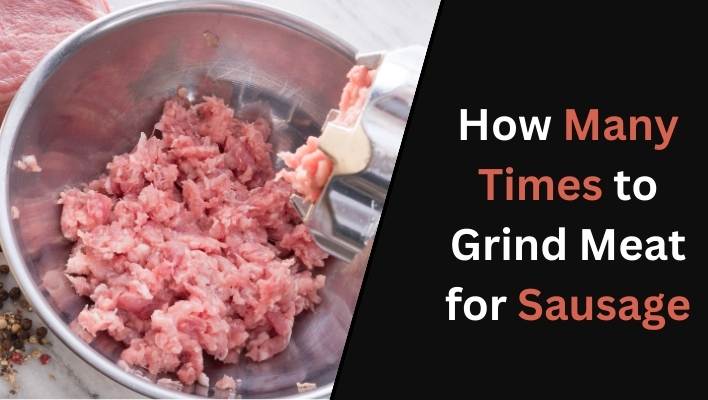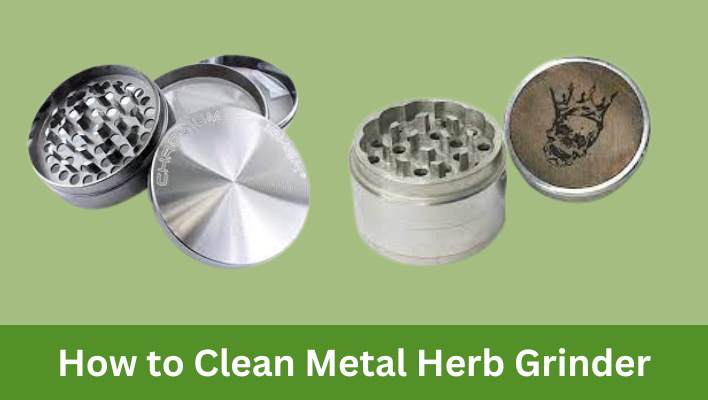Sausages are a popular and versatile food enjoyed by people all over the world, but have you ever wondered what makes them so flavorful and juicy? The secret lies in the process of meat grinding, a crucial step in sausage making that significantly impacts the quality and taste of the final product. Understanding the importance of meat grinding is essential for home cooks and professional chefs alike. In this article, we will explore the benefits of grinding meat for sausage and the role of meat texture in sausage production.
Benefits Of Grinding Meat For Sausage
Grinding meat for sausage offers a range of benefits that enhance both the flavour and texture of the final product. When you grind the meat yourself, whether using a manual or electric grinder, you have full control over the quality and freshness of the ingredients. Here are some key advantages of grinding meat for sausage:
- Improved flavour absorption: Grinding meat creates more surface area, allowing spices and seasonings to permeate the meat evenly. This results in enhanced flavour distribution throughout the sausage, ensuring each bite is packed with mouthwatering goodness.
- Customizable recipes: By grinding your meat, you can easily customize sausage recipes according to your taste preferences. You can experiment with different meat blends, fat ratios, and flavour combinations to create unique and delicious sausages.
- Fresher and safer ingredients: Purchasing whole cuts of meat and grinding them at home ensures that you are using fresh and high-quality ingredients. This eliminates the concerns associated with pre-ground meat, such as potential contamination or meat that has been sitting on the shelf for too long.
Role Of Meat Texture In Sausage Production
Meat texture plays a crucial role in the overall success of sausage production. The way meat is ground significantly affects the consistency and texture of the sausage, ultimately influencing its taste and mouthfeel. Here are some key factors highlighting the importance of meat texture:
- Binding ability: Properly ground meat develops a sticky texture that helps bind the sausage mixture together, preventing it from crumbling during cooking. This ensures a well-formed sausage with the perfect bite.
- Uniform distribution: Even and consistent grinding of the meat creates a uniform texture that enhances the eating experience. Whether you prefer a coarser grind for a rustic texture or a finer grind for a smoother mouthfeel, the texture of the meat contributes to the overall enjoyment of the sausage.
- Moisture retention: Grinding meat allows for better hydration, as the increased surface area enables the meat to retain moisture. This results in juicier and more succulent sausages that are a delight to savour.
The process of meat grinding plays a vital role in sausage making. Understanding the benefits it offers, such as improved flavour absorption, recipe customization, and the use of fresh ingredients, allows you to create truly exceptional sausages. Additionally, recognizing the significance of meat texture in sausage production helps you achieve the desired consistency and mouthfeel in every bite. So, next time you embark on the journey of making sausages at home, remember the importance of meat grinding to elevate your culinary creations to new heights.
Read Also: Can You Use a Meat Grinder to Make Peanut Butter?
Factors To Consider Before Grinding Meat For Sausage
Before grinding meat for sausage, it is important to consider how many times to grind the meat. The number of times will affect the texture and consistency of the sausage, so it is crucial to find the right balance for the desired results.
When it comes to making homemade sausages, grinding your meat allows you to have full control over the flavour, texture, and quality of your sausages. However, before you start grinding your meat for sausage, there are a few important factors to consider. These factors include choosing the right cut of meat for sausage and understanding the impact of fat content in the meat on the texture of your sausages.
Choosing The Right Cut Of Meat For Sausage

One of the key factors that contribute to the success of your homemade sausages is the choice of meat. Different cuts of meat have different fat and muscle content, which can affect the flavour and texture of your sausages. When selecting meat for sausage making, it is crucial to choose cuts that have a good balance of fat and muscle.
Read Also: Does Meat Need to Be Frozen for Second Grind?
The Impact Of Fat Content In Meat On Sausage Texture
The fat content in the meat plays a significant role in determining the texture of your sausages. Fat helps to keep the sausages juicy and moist, but too much fat can result in a greasy texture. On the other hand, too little fat can lead to dry and tough sausages. It is important to strike the right balance by choosing cuts of meat that have sufficient fat content for optimal texture and flavour.
Moreover, the fat content of your sausage is largely dependent on personal preference. While some people prefer leaner sausages with less fat, others enjoy richer and juicier sausages with a higher fat content. Consider your taste preferences and the desired outcome of your sausages when deciding on the fat content of the meat to be ground.
The Art Of Grinding Meat For Sausage: Perfecting The Process
Discover the perfect process for grinding meat for sausage, including how many times to grind it for optimal results. Master the art of creating flavorful sausages with this essential technique.
The Art of Grinding Meat for Sausage: Perfecting the Process
When it comes to making sausages, one of the most crucial steps is grinding the meat. The texture and flavour of your sausages greatly depend on how well you grind your meat. But what many people don’t realize is that grinding the meat multiple times plays a key role in achieving that perfect sausage consistency.
Read Also: How to Grind Meat for Baby Food: Ultimate Guide
Understanding the purpose of grinding multiple times
The purpose of grinding meat multiple times is to ensure that all the ingredients are evenly distributed throughout the sausage mixture. Additionally, it helps to create a smooth and uniform texture, resulting in sausages that are juicy and flavorful.
Grinding the meat multiple times also helps to break down the connective tissues and fat in the meat, resulting in a tender and succulent sausage. The repeated grinding process allows the flavours to meld together, creating a harmonious blend that enhances the overall taste.
The optimal number of times to grind meat for sausage

So, how many times should you grind your meat for sausage? The optimal number of times usually depends on the specific recipe and personal preferences. However, most sausage makers agree that grinding the meat at least twice is essential to achieve the desired texture and taste.
During the first grind, the meat is typically passed through a coarse grinding plate to break it down into smaller pieces. This allows for better seasoning penetration and helps to mix any additional ingredients thoroughly. After the first grind, the meat mixture is usually seasoned according to the recipe and chilled for easier handling.
Read Also: How To Grind Meat In A Vitamix?
The second grind is where the magic happens. This time, the meat is passed through a finer grinding plate, resulting in a smoother texture and ensuring all the flavours are evenly distributed. The repeated grind also helps to remove any unwanted sinew or gristle, further improving the quality of the sausage.
However, some sausages may benefit from an additional grind, especially if a finer texture is desired. For example, sausages like bratwurst or Frankfurters are typically ground three times to achieve a smoother consistency. It’s worth noting that the additional grinding can alter the texture and mouthfeel of the sausage, so it’s important to experiment and adjust based on your personal preference.
The art of grinding meat for sausage is all about finding the perfect balance between texture, flavour, and consistency. By understanding the purpose of grinding multiple times and determining the optimal number of grinds for your specific recipe, you can elevate your sausages to a whole new level. So, grab your grinder, select your plates, and let the delicious process begin!
Achieving The Desired Texture: Grinding Techniques
When it comes to making sausage, achieving the desired texture is crucial. The way you grind your meat plays a significant role in determining the outcome. Whether you prefer a coarse, medium, or fine texture, the grinding technique you use will make all the difference. In this Section, we will explore the various grinding techniques and their pros and cons so that you can make an informed decision on how many times to grind your meat for sausage.
Coarse Grinding Method
Coarse grinding is the first step in making sausage and involves feeding the meat through a large, coarse grinding plate. This technique results in large meat particles, giving the sausage a chunkier texture. Here are the pros and cons of using the coarse grinding method:
| Pros | Cons |
|---|---|
| – Retains the natural flavor and texture of the meat | – Limited binding ability, making the sausage crumbly |
| – Offers a more rustic and hearty texture | – May result in uneven distribution of spices and seasonings |
| – Creates a juicy and succulent sausage | – Requires longer cooking time due to the larger meat particles |
Medium Grinding Method
The medium grinding method is a versatile option that strikes a balance between the chunkiness of coarse ground meat and the smoothness of fine ground meat. With this method, the meat is passed through a medium-sized grinding plate to achieve a medium texture. Here are the pros and cons of using the medium grinding method:
- Pros:
- Offers a well-balanced texture suitable for a variety of sausages
- Allows for better spice and seasoning distribution
- Enhances the binding ability of the meat
- Cons:
- This may result in a less distinct flavour and texture
- Requires adequate fat content for moisture retention
Fine Grinding Method
The fine grinding method is perfect for producing sausages with a smooth and uniform texture. This process involves feeding the meat through a small grinding plate, resulting in finely ground meat particles. Here are the pros and cons of using the fine-grinding method:
- Pros:
- Creates a silky and tender sausage
- Allows for even distribution of flavours
- Promotes a cohesive texture, ideal for emulsified sausages
- Cons:
- May affect the natural texture and flavor of the meat
- Requires additional binders for moisture retention
- Can result in a denser sausage if overworked
The Science Behind Perfectly Ground Sausage Meat
When it comes to making delicious homemade sausage, the grinding process plays a crucial role in achieving the perfect texture and flavour. The science behind perfectly ground sausage meat involves factors such as the impact of equipment on the grinding process and maintaining the ideal temperature for better results. Let’s dive deeper into these aspects to understand how they contribute to the art of sausage making.
The Impact Of Equipment On The Grinding Process

The equipment you use to grind your meat is a critical factor in determining the quality of your sausage. Whether you’re using a manual grinder, an electric grinder, or a commercial-grade grinder, each option comes with its distinct advantages and disadvantages.
The manual grinder, for example, requires more physical effort but provides greater control over the speed and consistency of the grind. On the other hand, electric grinders are more efficient, saving you time and effort, but you may have less control over the texture of the ground meat.
Read Also: Can You Use a Meat Grinder to Stuff Sausage?
Commercial-grade grinders, commonly used in butcher shops or large-scale production, offer excellent power and precision. They can handle large quantities of meat with ease, ensuring a consistent grind. However, they may not be practical for home use due to their size and cost.
Maintaining Ideal Temperature For Better Results
The temperature at which you grind your meat can significantly impact the quality of your sausage. It is essential to keep the meat and equipment at ideal temperatures to achieve the desired results.
When grinding meat, it is crucial to work with chilled meat. This helps in preserving the meat’s texture and preventing the fat from smearing, resulting in a better blend of flavours. You can place the meat in the freezer for about 30 minutes before grinding to ensure it stays chilled.
Furthermore, it is equally important to keep the grinder and the surrounding environment at a cool temperature. The heat generated during the grinding process can cause the fat to melt, resulting in a greasy texture and compromising the overall quality of the sausage. Consider placing the grinder or the bowl containing the ground meat in a larger bowl filled with ice or cold water to maintain the desired temperature.
By adhering to the optimum temperature range, you can ensure that the fat and meat retain their characteristics, resulting in a moist, flavorful, and well-textured sausage.
Read Also: Can You Grind Meat After It& 39 : The Ultimate Guide to Grinding Meat Safely
Frequently Asked Questions On How Many Times To Grind Meat For Sausage
Should I Grind Meat Once Or Twice?
Grinding meat twice improves texture and flavour. It allows for better blending of fat, resulting in juicier and more tender meat.
Should I Grind Venison Once Or Twice?
Grinding venison once is enough.
Do You Season Sausage Before Grinding?
Yes, it is recommended to season sausage before grinding. Seasonings added before grinding evenly distribute flavours throughout the meat and enhance the taste.
How Do You Grind Meat For The Second Time?
Grinding meat for the second time is simple. Cut the meat into small pieces, ensuring they fit through the grinder. Pre-chill the meat for better texture. Grind it using a fine disc, as desired. Use caution to prevent over-grinding and maintain meat quality.
Conclusion
To sum up, the number of times you grind meat for sausage depends on the texture and flavour you desire. Grinding it once gives you a coarser texture, while multiple grinds create a smoother consistency. Ultimately, the decision is up to personal preference.
Just remember to handle the meat with care to maintain its quality and freshness throughout the grinding process. Experiment with different grinding methods to find your perfect balance of flavour and texture for delicious homemade sausages.





